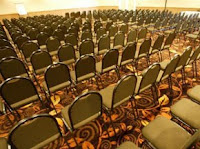It is a little slow in the office around the holiday season, so I thought I would write in this post about another kind of learning that I have embarked upon recently.
I joined a local choir a few months ago with my neighbour because I like to sing and am a fairly competent; I have sung off and on in choirs and in small groups for many years. I didn’t really expect to learn anything new except some French songs and perhaps more about some other people in my village. However, this current excursion is providing a completely new learning experience, which is immediately noticeable in the quality of my singing. Astounded, I asked myself, what is different about the process this time and is there anything transferable there?
In past choirs, the director would hand out the music, people would struggle with it for a while, we would break it down into parts, practice individually, put it together, have it sound horrible for a while and gradually it would come together and sound pretty good. The focus was on the notes, the words and the voice. Sing, sing, sing – hours of singing. The director’s motto was “do it again!” and gradually, from pure repetition, it would be note perfect, and he would have nearly beaten the life out of it.
In this new choir, the director calls it the “Tao of Voice”, and uses as her inspiration the book of that name by Stephen Cheng. During a 90 minute session, we stand side-by-side and sing from sheets of music for about 30 minutes. The rest of the time we are doing breathing and body movement exercises, singing songs without words, standing with our hands pressed against another singer’s hands to feel different notes, walking around in the semi-darkness singing tones from different parts of our body (have you ever tried to sing out the back of your head, or from your feet – try it, it is not as hard as it sounds). What this means when we do sing, is much more of a sensitivity to your body, and what has to happen in your whole body to sing properly. You sing with every part of you, and you are completely connected to the music, the words, and what you are doing to them while singing.
When you sing like this, you are completely there, in that moment, in that word and in that song – and that complete authenticity of experience and connection of everything we have produces music that is very different than those songs we sang 1,000 times in school choir. Our daily lives can be so scattered – we sit in one meeting, our mind is on our next trip, our heart is at home with the family – and how convincing is anything we say in that meeting? When we can bring all these things together, that is when the real music starts.




